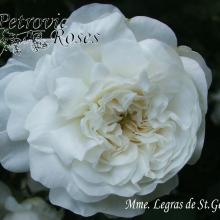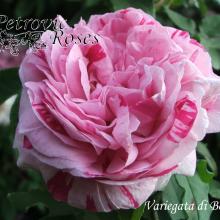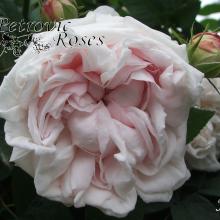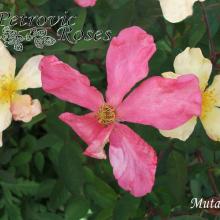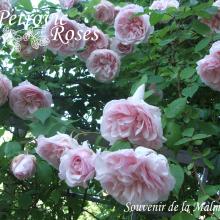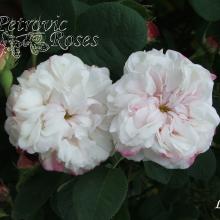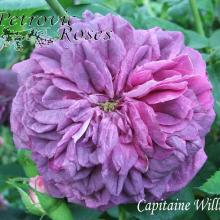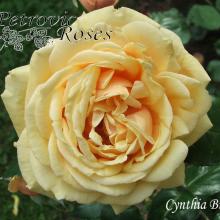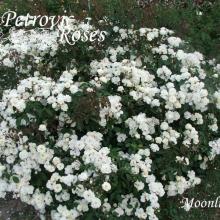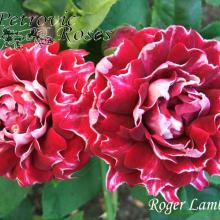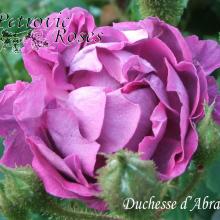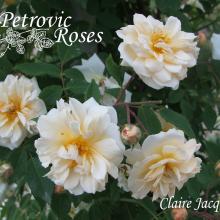Old Roses
Albas
Alba roses have smooth stems; they are lightly armed with fine prickles, and have grayish foliage. Flowers are pale, ranging from white to mid-pink, with a strong fresh scent. They only bloom in spring and are very resistant to diseases. A very old race of roses.
Bourbons
Bourbon roses flower repeatedly on vigorous, frequently semi-climbing shrubs with glossy foliage and purple-tined canes. They can be very fragrant. Originally this was a group based on a cross between the Autumn Damask (Rosa damascena x bifera) and a China rose. They first emerged in the mid-nineteenth century on the Île Bourbon (now called Réunion) off the coast of Madagascar in the Indian Ocean and were very popular in Victorian times, because of their repeat flowering.
Centifolias
Centifolia roses are named for their "one-hundred" petals; they are often called "cabbage" roses due to the globular shape of the flowers. Perhaps the first class of roses to be developed as a group of hybrid cultivars as far back as the late 17th century. The more vigorous forms usually produce large flowers of exquisite shape and fragrance, with the shorter types producing very double flowers almost invariably in perfect proportion to the size of the plant. As the result of damask roses crossed with albas, the centifolias are all once-flowering.
Chinas
These roses first appeared in the mid-eighteen century and their long flowering season encouraged breeders to raise many varieties throughout the nineteenth century. China roses are twiggy, smooth-wooded plants. They put flowers out of every joint and crevice. Most are compact and short, and also more cold-sensitive shrubs. They have mild fragrance and bloom repeatedly throughout the summer into the late autumn.
Climbers
Climbers produce flowers on the current year’s wood, so many are either continuous or repeat flowering. Both old and modern classes of roses have their "climbing" forms, whereby the canes of the shrubs grow much longer and more flexible than normal forms. Most climbing roses grow anywhere from 8' to 20' in height.
Damasks
Damasks are moderate to large growers, arching with tapering branches that bow down with the weight of their blooms. Their fragrance is strong, and today it is the scent most often associated with roses. For centuries, they have been used in the production of attar. They are usually healthy and some are remontant.
Gallicas
Gallicas are a very old class of roses, since middle ages, developed from Rosa gallica which is a native of central and southern Europe and western Asia. They flower once in the spring or summer. They are richly colored in a pink and mauve palette, with intricate flowers packed with petals and perfumed.
Historic Tea Hybrids
Perhaps the most popular of all roses. Here you can find the older varieties. Since the first hybrid tea rose La France, introduced in 1867, we have today many different varieties. The flowers are well-formed with large, high-centred buds, and each flowering stem typically terminates in a single shapely bloom. The shrubs tend to be stiffly upright and sparsely foliaged. Flower continuously through the season.
Hybrid Musks
The hybrid musk group was mainly developed by Rev. Joseph Pemberton, a British rosarian, in the first decades of the 20th century. They are mostly fragrant with sweet and fruity scents. They bear subtly colored smallish flowers in large clusters, and have healthy lustrous foliage. Disease resistant. Flower continuously through the season.
Hybrid Perpetuals
The dominant class of roses in Victorian times, hybrid perpetual emerged in 1838. By 1900 it is estimated that some 4000 hybrids had been introduced, but unfortunately, over 3000 lost forever. The colour range is white, pink, red, purple and crimson and includes some good striped varieties. Their growth habits are variable from short, compact plants to vigorous shrubs, most will give a repeat flowering.
Mosses
A group of roses usually of Centifolia origin. Moss roses bear mossy resin glands on the sepals that often gives off a pleasant woodsy or balsam scent when rubbed. The mosses derived originally as sports of Damasks and Centifolias and were very popular in Victorian times. They are mostly compact and some of them repeat blooming, and their fragrance is very diverse.
Noisette
First Noisettes were small-bloomed, fairly winter-hardy climbers, but later infusions of tea rose genes created a subclass with larger flowers, smaller clusters, and considerably reduced winter hardiness. They are found in 1817's. Flower continuously through the season.





